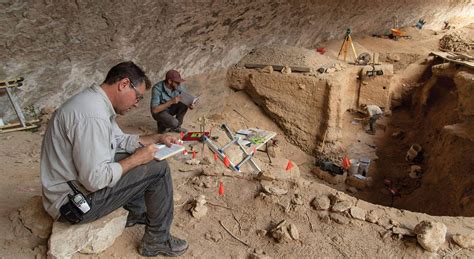Have you ever wondered about the secrets hidden beneath the earth’s surface? How ancient civilizations lived, thrived, and eventually disappeared? The field of archaeology offers a fascinating and insightful glimpse into our past, unlocking the mysteries of bygone eras and unearthing the remnants of ancient societies. In this blog post, we will delve into the diverse and captivating world of archaeology, from the exciting process of excavation to the delicate conservation of priceless artifacts. We will explore the pivotal role of archaeology in unraveling the complexities of human history, and examine the ethical considerations and challenges faced by modern archaeologists. Join us as we embark on a journey through time, discussing the advancements in technology and the future innovations that continue to shape the captivating field of archaeology. Together, let’s explore the past and ponder the enduring significance of preserving our shared human heritage.
Table of Contents
Unveiling Ancient Mysteries Through Archaeology
Archaeology is a fascinating field that enables us to uncover the mysteries of ancient civilizations, providing a window into the past and shedding light on the origins of human society. Through the careful study of artifacts, sites, and other remains, archaeologists piece together the puzzle of our ancestors’ lives, revealing the ways in which they lived, worked, and interacted with their environment. The field of archaeology has made significant contributions to our understanding of human history and continues to unveil ancient mysteries that have long been lost to time.
One of the most captivating aspects of archaeology is its ability to bring to life the stories of people who lived thousands of years ago. By excavating and analyzing ancient sites, archaeologists are able to reconstruct the daily activities, religious practices, and social structures of past societies. This work not only enriches our knowledge of the past but also provides important insights into the development of human culture and civilization.
Furthermore, the methods and techniques used in archaeology continue to advance, allowing researchers to make new and exciting discoveries. From groundbreaking technologies such as LiDAR and 3D mapping to innovative approaches in DNA analysis and dating methods, archaeologists are constantly developing more precise and comprehensive ways to explore and interpret the past. These advancements have revolutionized the field, opening up new possibilities for uncovering ancient mysteries and pushing the boundaries of our knowledge.
Overall, archaeology plays a crucial role in unveiling the ancient mysteries that have shaped our world. By piecing together the fragments of ancient civilizations, archaeologists provide us with a deeper understanding of where we come from and the rich tapestry of human history. Through their work, they not only preserve the legacy of the past but also inspire wonder and curiosity about the incredible journey of humanity.
Unearthing Ancient Civilizations: The Role of Archaeology
Archaeology plays a crucial role in unearthing ancient civilizations and shedding light on their history, culture, and way of life. Through the meticulous excavation of artifacts, buildings, and other remnants of the past, archaeologists are able to piece together the puzzle of civilizations that have long been lost to time.
Using advanced technology such as ground-penetrating radar, LiDAR, and 3D imaging, archaeologists are able to uncover ancient ruins and settlements that have been buried for centuries, providing valuable insights into the lives of our ancestors.
Furthermore, the preservation of these ancient artifacts is key to maintaining a tangible link to our past. Through techniques for conservation such as chemical stabilization, desalination, and proper storage, archaeologists ensure that these invaluable pieces of history remain intact for future generations to study and appreciate.
Overall, the role of archaeology in unearthing ancient civilizations is essential in preserving our collective human heritage and understanding the rich tapestry of human history and culture.
From Digging to Discovery: The Archaeological Process
Archaeology is a fascinating field that involves the study of human history through the excavation and analysis of material remains. The process of uncovering and interpreting these artifacts is a meticulous and complex one, requiring a combination of scientific expertise, historical knowledge, and careful observation.
From the initial phase of selecting a site for excavation to the final stages of analysis and interpretation, the archaeological process involves a series of methodical steps that ultimately lead to the discovery of valuable information about past civilizations. Excavation is a crucial part of this process, as archaeologists carefully dig through layers of soil to uncover artifacts and structures that have been buried for centuries.
Once the artifacts have been unearthed, they are meticulously examined and documented, using advanced techniques to ensure their preservation and study. This involves the use of photography, mapping, and detailed descriptions to create a comprehensive record of the findings.
The final step in the archaeological process is the interpretation of the discoveries. This involves analyzing the artifacts and structures in the context of their historical and cultural significance, piecing together the puzzle of the past to gain a deeper understanding of the people and societies that came before us.
Preserving Artifacts: Techniques for Conservation
Preserving artifacts is a crucial aspect of archaeology, as it ensures that valuable historical objects remain intact for future generations. The conservation of artifacts involves a range of techniques designed to prevent deterioration and protect these items from external damage.
One of the most common techniques for artifact preservation is stabilization, which involves preventing further decay and maintaining the structural integrity of the object. This can be achieved through the use of chemical treatments, such as coatings or sealants, to protect the artifact from environmental factors.
Another important method is documentation, which involves recording detailed information about the artifact through photography, illustrations, and written descriptions. This not only helps in preserving the historical significance of the object but also aids in monitoring its condition over time.
Furthermore, proper storage and handling of artifacts is essential for their conservation. This includes using archival-quality materials, such as acid-free tissue paper and storage boxes, to prevent any damage from occurring due to improper storage conditions.
Interpreting the Past: How Archaeologists Analyze Findings
When it comes to archaeology, one of the most crucial aspects of the discipline is the interpretation of findings. Archaeologists often discover artifacts, structures, and remains that provide valuable insights into ancient civilizations. The process of analyzing these findings involves a combination of careful examination, scientific techniques, and historical context.
First and foremost, archaeologists must carefully excavate and document their findings. Through meticulous recording and documentation, they can piece together the context in which the artifacts or structures were found. This step is crucial in understanding the archaeological site as a whole and can provide important clues about the people who inhabited it.
Once the artifacts are unearthed and documented, archaeologists employ a variety of scientific techniques to analyze them. This may include carbon dating to determine the age of organic materials, as well as chemical analysis to identify the composition of certain artifacts. These techniques help archaeologists create a timeline of the site and understand the materials used by ancient civilizations.
Furthermore, interpreting the past also involves a deep understanding of historical and cultural context. Archaeologists may draw from historical records, anthropological studies, and other disciplines to contextualize their findings. By placing the artifacts within the broader framework of human history, archaeologists can glean insights into the societal structures, customs, and technologies of ancient civilizations.
Technology in Archaeology: Advancements in Research
Technology in archaeology has greatly advanced research methods and techniques, leading to groundbreaking discoveries and a deeper understanding of ancient civilizations.
One of the most significant advancements in technology is the use of LiDAR (Light Detection and Ranging) to uncover hidden archaeological sites. This technology allows researchers to create highly detailed 3D maps of landscapes, revealing ancient structures and features that are not visible to the naked eye.
Furthermore, the use of ground-penetrating radar (GPR) has revolutionized the way archaeologists locate and map buried artifacts and structures without the need for invasive excavation. This non-destructive method allows for the preservation of sites while still gaining valuable insights into the past.
Another important technological advancement is the application of GIS (Geographic Information Systems) in archaeology. This tool enables researchers to analyze and visualize spatial data, such as the distribution of artifacts, settlements, and environmental factors, providing a comprehensive understanding of past human behaviors and interactions with the environment.
Archaeology and Anthropology: Unveiling Human History
Archaeology and anthropology are two disciplines that play a crucial role in unveiling the history of human civilization. Through the meticulous study of artifacts, ancient sites, and human remains, archaeologists and anthropologists are able to piece together the puzzle of our collective past.
This process involves careful excavation and analysis of physical evidence, as well as the interpretation of cultural practices and societal structures. By studying the evolution of human behavior and communities, these fields provide valuable insights into the development of human societies over time.
Archaeology and anthropology also allow us to understand the connections between different civilizations, as well as the impacts of environmental factors on human history. Through the study of ancient artifacts and the analysis of human remains, researchers can paint a vivid picture of the way our ancestors lived, interacted, and adapted to their surroundings.
As these disciplines continue to evolve and leverage new technologies, our understanding of human history deepens. The integration of DNA analysis, 3D imaging, and remote sensing has revolutionized the way researchers approach their work, allowing for more comprehensive and precise insights into the past.
Underwater Archaeology: Exploring Sunken Treasures
Underwater archaeology is a fascinating field that involves the study and exploration of sunken artefacts and structures. From ancient shipwrecks to submerged cities, underwater archaeologists uncover valuable pieces of history that have been preserved beneath the sea for centuries.
Using advanced diving techniques and specialized equipment, archaeologists are able to access and document underwater sites, providing insight into ancient civilizations and their maritime activities. The discovery of sunken treasures offers a unique glimpse into the past, shedding light on trade routes, navigation methods, and cultural exchange.
Conservation plays a crucial role in underwater archaeology, as artifacts recovered from the sea must undergo careful preservation to prevent deterioration. The challenges of working in underwater environments require innovative approaches to documentation and excavation, contributing to the development of new methodologies within the field of archaeology.
Exploring sunken treasures through underwater archaeology not only enriches our understanding of history, but also raises important ethical considerations regarding the protection and management of submerged cultural heritage. As technology continues to advance, the future of underwater archaeology holds the promise of further discoveries and the continued exploration of the world’s underwater treasures.
Archaeological Ethics: Balancing Preservation and Research
When it comes to the field of archaeology, the balancing act between preservation and research is a critical ethical consideration. Preservation involves protecting and conserving artifacts and historical sites for future generations, while research aims to gain knowledge and insights from these valuable resources. It is essential for archaeologists to navigate this delicate balance with integrity and respect for the cultural heritage they are working to uncover.
One of the key ethical considerations in the field of archaeology is the impact of research and excavation on the preservation of historical sites. Every time a site is excavated, there is a risk of damage to the artifacts and structures. It is important for archaeologists to consider the long-term consequences of their work and to prioritize the preservation of the site and its artifacts.
Another area of ethical concern is the treatment of human remains and sacred artifacts. It is vital for archaeologists to approach these aspects of their work with the utmost sensitivity and respect for the beliefs and practices of the culture to which they belong. This involves working closely with local communities and indigenous groups to ensure that their cultural heritage is treated with the reverence it deserves.
Overall, the field of archaeology requires a careful and ethical approach to balancing preservation and research. By prioritizing the long-term conservation of historical sites and artifacts, and by respecting the beliefs and practices of the cultures they are studying, archaeologists can ensure that their work is conducted with integrity and respect.
The Future of Archaeology: Innovations and Challenges
As we look to the future of archaeology, it is clear that the field is on the brink of exciting innovations that will revolutionize the way we study and interpret human history. With advancements in technology and new methodologies, archaeologists are poised to make groundbreaking discoveries that will reshape our understanding of the past.
However, along with these innovations come a host of challenges that must be addressed. One of the main challenges facing the future of archaeology is the preservation of sites and artifacts in the face of climate change and human development. As the earth’s climate continues to change, many archaeological sites are at risk of being lost forever. It is essential that archaeologists find new ways to protect and conserve these precious resources for future generations.
Another challenge is the ethical considerations involved in archaeological research. As technology continues to advance, questions surrounding the use of drones, satellite imaging, and other high-tech tools in archaeological excavation are becoming increasingly important. It is crucial that archaeologists navigate these ethical questions with care, balancing the need for research with the preservation of cultural heritage.
In conclusion, the future of archaeology holds tremendous potential for innovation and discovery, but it also presents a host of challenges that must be addressed. By embracing new technologies and methodologies while also preserving and respecting the past, archaeologists have the opportunity to shape our understanding of human history in profound ways.






